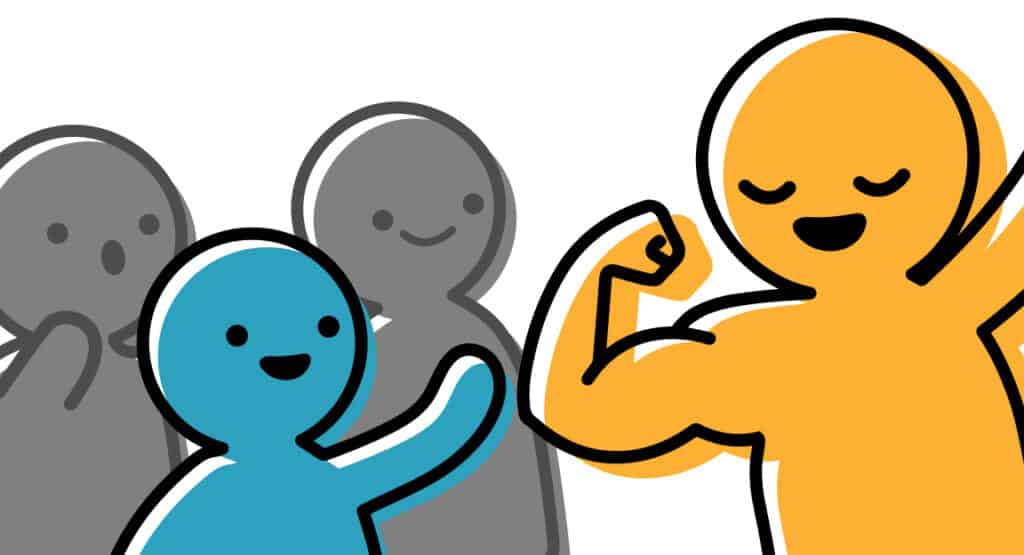Curing what Ails Medical Debt

What credit unions have known all along federal regulation may now agree: For too many years, medical debt and collections have weighed heavy on consumers and members credit scores. Due to the rising price of medical care, newer high-deductible plans for insurance and inflation, medical debts have become a burden many of our members cannot help or erase. In fact, 58% of debts recorded in 2021 were for medical debt, according to the Consumer Financial Protection Bureau. Even worse, these collections affect 100 million US consumers or 41% of the adult population. Among the hardest hit areas for medical debt are in the deep south and southeast regions of the US in which many counties experience rates of 30%-40% of consumers with medical debt. The debts negatively affect members credit scores although the CFPB also finds that medical debt, unlike other kinds, does not accurately predict a consumer’s creditworthiness. In fact, we’ve seen similar changes already on a smaller scale. Last year, the three largest credit agencies – Equifax, Experian, and Transunion – stopped including some medical debt on credit reports, as long as the bills were paid-off or less than $500. If this debt or the collections thereof does not accurately predict a person’s creditworthiness or risk, why is it even included on the credit report? That’s a question that’s being answered now as the Biden Administration enacts a plan to introduce federal rules barring medical bills from affecting consumer credit scores. Many credit unions already overlook or disregard medical debt or collections from their loan decisioning. And rightfully so considering members can and do budget for big purchases, payments and monthly costs but few budget for illness, accident or medical emergencies. Unfortunately, even with great loan decisioning, many in our industry use risk-based pricing to decide loan rates, further hurting these members financially and costing them more each month due to the reporting of their medical debt. Looking past just loan decisioning, consider the additional costs associated with low credit scoring. From insurance to utility down payments, these members will pay more out for the same services or products than others simply for healthcare-related reasons. The worse their score gets, the bigger the burden to pay for monthly services or to save up the required down payments. Many turn to alternative lenders like payday companies, finance companies and other high-rate lenders for help. If enacted, the regulation under consideration could be great news not just for our members, but for our financial industry. Our members can save money on down payments with utility companies and get better insurance rates. They can get better loan rates, leaving more money each month for family, fun or what matters most to them. Further, we should see medical-driven bankruptcies fall further, much like it did from 2010 to 2016 when the Affordable Care Act took effect and bankruptcy rates dropped to nearly half. If it produces similar results, we may see fewer member bankruptcies, charge-offs, repossessions, and further improved credit scoring for our members.
Relationships

Here’s an interesting question. What is one of the longest, if not the longest, relationships a person will experience in their life? Here’s a hint – it’s not a marriage. In fact, it may not even be friendship. It’s a person’s relationship with their bank, and primarily, their checking account. It’s true! Just think of the longest relationships and biggest life needs and you’ll be amazed. The average length of car ownership? Eight years. Homeownership? A little better, but only 13 years. A marriage last longer, right? Nope! Most last eight years on average. Friendships are the closest to the truth at 17 years but still not quite as long as a person’s relationship with their checking account and bank. That comes in at almost 18 years! This provides some explanation for why it can be difficult to convince that member to move their relationship to us. We’ve asked and we’ve asked but they just don’t seem to budge! Well, let’s look at why it can be so hard to convince them to move their primary relationship to us (and why some relationships just don’t last)! Looking back to the statistic on marriage, Robert Taibbi L.C.S.W. states that adult development moves in roughly seven years blocks. Why? Needs change. People change. Seven years is a significant amount of time. Just think about how often your needs change financially. Odds are, you aren’t in the same financial place as you were even six months ago, let alone seven years ago! The fact is, needs change and if those needs aren’t being met – sometimes it’s best to look to a new provider. And people do just that. So why, if needs change financially, more often than romantically, do more people stay with their bank rather than move? Studies show the largest factor is pricing. Two types of costs are to be considered here – time and money. Roughly 48% of checking accounts are considered free or not having a monthly charge. Those that do charge a fee, charge $14 a month or almost $170 a year for their service. Also, the convenience. Moving a checking account isn’t easy or fun. Balancing the need to move with the cost (and aggravation) of moving is a fine balancing act. Often, the monetary savings doesn’t overcome the time expense of the move. Much like a friend is stuck in a bad marriage, our prospective members may be staying with their bank simply due to the fact that it costs so much to get a divorce! Although as the known joke says, the reason divorces cost so much is because they’re worth it. So, if you’re looking to grow your membership but coming up short, what would make the cost of divorcing your current bank worth it? Let’s look at a few steps to consider increasing your member acquisition and target the right members for your organization. Need help to determine your ideal member or researching what matters most to them? Reach out to us! We help narrow the field of vision so that the only people who have eyes for you are those you are best to serve.
Too Good to Be True? Think Again.

Want the easiest way to increase sales by up to 21%, lower turnover rates and increase market share by 25%? If you’re reading this and thinking, ‘This is too good to be true,’ it might just be. There’s no easy button to press and no magic elixir to make this happen. What you need to do is empower your employees. In a financial world where we are often constrained or choked by regulation and processes, there is often a workforce who is also experiencing the same feelings due to internal processes, bureaucracy or even micromanagement. The inability to act autonomously or within personal discretion goes out the window. It’s easy to see that due to past incidents, employees or members there may be constraints or processes in place that limit the discretionary capabilities your team otherwise might enjoy. Seldom are these processes in place due to new leadership, longtime employees or your ideal members. If you realize your team isn’t performing at its peak, the culture has diminished or even experiencing higher turnover rates recently, it may be time to hit reset and give more power to the people with expected higher returns. The more empowered your team is can translate into a better informed, engaged and qualified pool of applicants when the time comes to fill higher-level positions in the future. What your Credit Union can Achieve with Empowered Employees By implementing strategies to empower your staff, such as delegating authority, fostering a supportive work environment, providing learning opportunities and recognizing achievements, you can reap these benefits and create a thriving and successful credit union. Implementing Empowerment with your Credit Union Employees Still unsure if empowerment can lead to a more engaged workforce? Take this quote from an employee at Pinnacle Financial Services (PFS), “From my first day until now, I’ve been made to feel welcome, seen and supported. I’m encouraged to follow my passions on projects that are important to me. I’m proud to tell others I work here.” PFS was recently named the 24th best company in the nation to work for by FORTUNE magazine and has made the list since 2017. Pinnacle has been very intentional in creating the best culture possible as that would bring in the best, most engaged employees and thus create the best service possible for its clients. The result? They are the No. 1 bank in the Nashville-Murfreesboro-Franklin MSA and are a top 30 bank according to Forbes even though it was just founded in October 2000. Implementing a similar strategy will empower your frontline credit union employees, leading to increased job satisfaction, improved member experiences and a more successful credit union overall. Remember to adapt and tailor this strategy to align with the unique needs and culture of your credit union.
Recognition – CSuite

“The only thing standing between you and outrageous success is continuous progress.” — Dan Waldschmidt, business strategist Often during our marketing calls, a credit union leader will stress the importance of boosting team engagement. Be it for better performance, numbers, or more cohesion on the team they always seem the ask the same question – “What can we do to get our teams to improve?”. Well, I have the answer and honestly, it’s not hard. It just takes consistency, intention, and meaning. As a credit union leader, you know that engaged employees are key to a successful organization. Engaged employees are committed to their work, more productive, and provide better member service. According to a Gallup study, highly engaged teams achieve a 21% increase in profitability compared to teams with low engagement levels. So, what is the single most effective way to increase team engagement in your credit union? The answer is clear: focus on employee recognition. Employee recognition is a powerful tool for increasing engagement because it shows employees that their contributions are valued and appreciated. Recognition can take many forms, from simple thank-you notes to formal awards ceremonies. The important thing is to make recognition a regular part of your credit union’s culture. Here are some tips for implementing an effective recognition program: By focusing on employee recognition, you can create a more engaged and productive team. According to a survey by Globoforce, companies with a strong recognition culture have a 31% lower voluntary turnover rate. Additionally, 85% of employees who receive recognition say they feel satisfied with their job. Implementing an effective recognition program doesn’t have to be complicated or expensive. The key is to make it a consistent and meaningful part of your credit union’s culture. As a leader, it’s your responsibility to create an environment where employees feel valued and motivated to do their best work. By investing in employee recognition, you’ll see the returns in the form of a more engaged, productive, and loyal team. Not sure what recognition might look like for your team? Reach out to your Relationship Development Leader to discuss your strategy and how we can implement a winning strategy for your team.
“You can’t get blood from a turnip.” – Historical Allegory for Financial Gain.

In lending, it’s often a case of “racing to the bottom” regarding rates and pricing. Competitors all try to have the best and lowest rates in town to maximize their loan dollars lent out to the best and most reputable borrowers. In deposits, we are seeing something very similar whereas all our financial competitors are racing to the top. Tossing out gaudy rates and trying to be the first, sometimes even before the Fed makes its next announcement. Sound familiar? I encourage you to remember, you can’t get blood from a turnip. You can only get blood from livestock, not from produce. Financially speaking, shepherds with their flocks of pricey livestock would be more representative of today’s affluent members while farmers just trying to get by can be more representative of who credit union membership is mostly designed to serve. Credit unions for much of our history were designed to help the underbanked, the underserved, and those that the banks themselves didn’t want to do business with themselves. Let’s get back to that and design our success in deposits with that in mind, much like we do our loans. In lending, it’s not advantageous to just serve the A+ credit paper. Sure, you know the payment will be made on time, every time. But at such low rates in the past few years, credit unions have wizened up that the thin and lower credit tiers (with charge-offs factored in) create not just more profit but more loyalty among their membership. Why can’t deposits work the same way? In fact, 80% of American households have less than $50k in savings at all. With so many competitors competing for just 20% of households, who will have the most success winning the business of the affluent shepherds, and how much more of an opportunity would we have if we set our sights on the 80% who probably aren’t being targeted? Just this week while celebrating a friend’s birthday, a conversation was held in which the party host was talking about their plan of financing their home repairs and remodels with a low or zero introductory rate credit card while letting their savings grow in a 4% savings account. No, this person didn’t have $50k to lock into a CD or share certificate, but they had what they considered a substantial amount invested safely for a predetermined amount of time until they needed the funds to pay off that balance. The unfortunate news though – their account was at a big bank, not a credit union. Why? Because the bank offered them more on a liquid account. Can we design our liquid savings products with enough benefits, gusto, or bells and whistles as we design our share certificate rates? Yes, it’s much faster to get the deposit dollars through a few large share certificates but ultimately are they just a band-aid for a much larger problem we might be facing? I know many may be reading this and thinking, “But, I need money NOW.” That’s fine. We all need a band-aid for the bump or scrape at times along the way. But take the time to look forward and see what caused the scrape in the first place. We as an industry have been so focused on the immediate need for loans this past decade, we might have lost sight of serving our members, our ideal members, for their deposit needs as well. Make a long-term plan on gaining more deposit share through direct deposit and offering more unique savings opportunities for the members who have lower savings amounts. You might just get blood from the turnip after all.
Do this to improve loan-app completions and get the most from your credit union marketing.

With warmer weather on the horizon, many of us are thinking of ways to do a thorough spring cleaning. Time to throw out, donate or sell all the items you no longer need or forgot you had. From those jeans you’ll never wear or the appliance you bought because it looked great in the ad but never used. Don’t forget to throw out those antiquated loan application questions. Wait…what? Seriously, they can sabotage your credit union marketing efforts. Yes, much like the gifted fruit cake in the back of the fridge or the bell-bottom jeans boxed up in the attic, your loan application may just have collected a few cobwebs. In fact, odds are the application doesn’t even “fit” anymore. Clear out those outdated, ill-fitting loan questions. When a consumer visits your site or branch, your first impression may very well be your loan application. For many members, this can be a daunting task with numerous pages, voluminous questions and a huge time commitment. Even worse, you already have much of the information for existing members, so why ask again? And while many credit unions do help those the banks won’t and charge an appropriate rate to do so, based on the averages, charge offs were low across the board – 30 basis points for credit unions and 26 basis points for banks (seasonally-adjusted). Before we pat ourselves on the back, let’s evaluate why credit union charge-offs were so similar to the banks. How can we make more loans, help more people and take more risk? To receive more applications and make more loans, streamline your loan application to just what you need to decide whether a loan is approved or declined. Of course, outliers will pop up, and you’ll need to speak with a few members to ask deeper questions. You’ll need to connect the dots on riskier loans to make them make sense. But think about the loans you are already approving: How much information do you request upfront versus how much data you need to make a decision? In many cases, we are creating friction in the member experience. Asking too much, scrutinizing too much, receiving too few and frequently approving too few. Think about what your credit union really needs to make most decisions. Income, social security number and a current address. Delete what you don’t need like prior address, prior employment, current obligations, etc. Unless you truly need it to decide approval, why ask for it? If you already have or can get the information needed, why ask for it again? Many applications still include a table for members to enter their current loans and other obligations when much of this information will be included in their credit file. Here are a few examples of what could be eliminated if you do not actively use it making a loan decision: We see this time and time again with our credit union marketing clients. They are doing the right thing by marketing, spending a considerable budget for digital advertising and other placement, and we can see how many prospective or current members are visiting the site and clicking “Apply Now.” When we examine how many of those convert to completed applications, there is a gap. Sometimes the members get distracted but often they simply decide against completing the lengthy application, the multitude of questions and the sheer time commitment – especially if they assume they’ll be turned down. We can reasonably expect fewer completed applications to funded loans, but when the number is 40%, 50%, of even higher than 60%, we have to consider that ill-fitting, outdated loan application. If we can streamline the process, more applications will be completed, more members helped and improved margins to your bottom line. Yes, you may see your charge-off rate increase, but with appropriate pricing you’ll see your income go up as well. Help your credit union help more members by cleaning up your loan application and make applying for a loan the easiest task your members have on their to-do list today. At Your Marketing Co., we leverage our 15 years of experience across dozens of clients to set your credit union marketing up for the best results. Let’s talk!
Make Storyselling Part of Your Credit Union Marketing Plans

A prospective member enters to apply for a loan or even open a share certificate. To do so, you must help open a membership for them. When asked if they would like to open a checking account or move their direct deposit to the credit union, the new member responds with a very quick, “NO.” Sound familiar? It probably happens every day, but think about why that might be. What have members told you that could indicate why they were unwilling or unable to move their relationship to us? They are here opening a loan, share certificate, or any other financial product so it would make sense for them to use our other services as well. This is where storyselling can become a part of credit union marketing plans – by listening to their story. Be curious. Train your team to ask why they aren’t interested in moving more of their relationship to your credit union. They’ll likely inform you of where they have their account now and even how long they’ve had accounts at that other credit union or bank. Naturally, we tend to try and sell our credit union to make us seem like the better option, but before you do that, stop and ask a few more questions! Instead of asking them why they aren’t interested, ask them why they are at your credit union in the first place! Ask, “That’s great you’ve been with your other bank for so long, but if you have a great relationship with them, what brought you into our credit union today?” Open the door to find out why they are here and not at their current financial institution opening the same product they are requesting from you. They have a reason for being here at your credit union and not ‘there’ at their other financial institution. It may be your great rates for loans or high-yield deposit products or something else entirely. We can definitely assume their other institution is not taking care of all their needs or providing the level of service they desire. If it were, your new member would be at that competitor right now. Rather than selling them on your credit union, help them realize why they are at your credit union and not their other financial institution. For a member opening a loan or deposit account, you may hear, “You have a better rate.” Ask them why they continue to support the other bank or credit union when it’s clearly not supporting them. Let them know that although there is work involved with moving their relationship, the benefit is that it helps your not-for-profit, cooperative credit union provide the low loan rates and high dividend rates they desire! If their institution cared for them as much as your credit union cares for your members, wouldn’t they offer the best rates possible? You may even hear this new member say that the other bank or credit union won’t approve them for a loan. Ask them why they want to keep their relationship there when your credit union is ready to help them on their financial journey; that another institution has demonstrated it will not be there for them. Why should they continue supporting a business that doesn’t support them? Your credit union will not only be there for that member but also their money on deposit will be lent out to other members who need credit and are having trouble getting it. They can help themselves and others just like them by making the move. For your credit union to grow loans, you need that deposit growth, especially now, to keep providing more, affordable loan funding. Credit unions must balance higher APY products with our lower-paying deposit accounts, like savings and checking, to maintain liquidity and continue funding loans for members who might not be able to get a loan elsewhere and are worth a shot. Support for both sides of the balance sheet is why it’s critical for us to try to capture the full relationship the first time we help a member, because deposits are our primary funding for loans – and the least expensive to the institution. It’s time for credit unions to be forward and help members who come to us for a single service or product to realize the importance of your credit union’s mission, the value of their full relationship with us, and the impact it will have on the entire community. Make storyselling part of your credit union marketing plans in 2023!
Your Credit Union Marketing Can’t Be Everything To Everybody

“You can’t be everything to everybody, but you can be everything to somebody.” – Trent Shelton A while back, flipping through Facebook Reels (those short videos that are seemingly provided at random) I stopped to listen to what appeared to be a band’s street busking performance. They were performing Cab Calloway’s 1931 recording, “Minnie the Moocher” in what appeared to be a neighborhood or town square. An impassioned performance if there ever was one, but supposed street buskers, you hear as the lead singer strained and reached the sounds and notes with his voice and the uniqueness of his incorporation of a kazoo into the mix. As a fan of folk and roots music, I immediately checked the comments to see who these guys were and in what city they played. It took a while to find the answers I had looked for. Many of the top comments were negative with condescending words about the singer’s vocals or even the use of a kazoo. Many were putting the band down or talking about their dislike of their music. The comments confirmed the old saying, “Everyone’s a critic”. Finally, I saw the comment I had hoped to see. This band was called Brothers Moving, based out of New York City. For those who may not know, Brothers Moving was originally a street band that later signed a major record deal after a passerby’s video of them went viral online. After many sellout concerts with much international success, they’ve continued to record and released their most recent album in 2020. Seeing the comments and learning the band’s story brought parallels between the music industry, Brothers Moving, and our business as credit unions. For one, overlook the naysayers. As credit union professionals, we often react to the naysayers. We are so focused on not upsetting even a single member, it’s often the most vocal members who have the largest impact although they may make up the smallest portion of our member base. Second, know who you are here to help. You have a unique set of products, solutions, and experience but you can’t help everyone and you can’t make everyone happy. Focus on your ideal members, the ones you’re best suited to help. How different would this band be if they decided to listen to the detractors? Bands (and credit unions) must realize that at times, the loudest or most outspoken voices may not be the best influence. If your messaging, images, or solutions are best suited for your ideal members, don’t rush to change. Take a moment to not just hear and react to the comments but understand truly from whom they are coming. To draw a parallel to a more recognizable street busker, imagine if Jimmy Buffett had listened to the many passersby that maybe didn’t appreciate his music at the time. He found his niche, on the streets of New Orleans, writing songs that told stories for the wanderlust, forlorn, and adventurers. He found his ideal audience, knowing not everyone may appreciate his art. Ultimately, know who you are destined to serve and commit to those members who you can have the biggest impact for. After all, you can’t be everything to everybody, but you can be everything to somebody. If you are ready to discuss who that somebody might be, let’s talk!
Finding Success For Your Credit Union Marketing Strategy Without Sales Calls

Messaging via Slack on how to gain and maintain engagement from both our teams and members, one account manager typed, “The credit unions that do well and hit their goals are having regular staff meetings and discussing their monthly and annual goals. The ones who do very well understand that their products can make a difference in the lives of the people they are serving, and the conversations help them hit their goals.” If this doesn’t sound like your credit union marketing strategy, it should. Reading that gave me immediate flashbacks to a young professional I once employed at a large, regional bank. He had all the product knowledge and personality one could hope for in a customer service role. Unfortunately, he was routinely falling short of hitting his goals. He knew his goals, reviewed them each day, and was trying his hardest but still wasn’t quite reaching his full potential. That changed on a call one night. Typically, we hated call nights. That meant a branch or two in the area was behind on their goals bringing our collective average down. In turn, all branches got to stay after hours and try to open more accounts and loans or bring in new money to reach our quarterly goal. After all, there’s nothing clients or members like better than being called during dinner time to discuss finances! But this night was different. We decided to not sell anything. His goal was to keep clients on the phone. Just talk – nothing more. Success was measured if he could tell me about five clients and their lives. For someone as social and personable as he was, he felt zero pressure trying to reach this goal. The funny thing is that just a few weeks later I offered to help a client who had been waiting in the lobby. The client politely declined to wait for my teammate to help him instead. When asked why, the client said, “He knows my financial story, I’d rather not have to explain it again.” That client was one of the conversations he had on that call night. It wasn’t long before he was not only hitting his monthly and quarterly goals, but he was surpassing them. He found a way to reduce the pressure of sales, build relationships and use his strengths to truly impact lives. He did very well after that epiphany. With lobby traffic down and more members opting to bank digitally either for convenience or health concerns, you may wonder how to keep your team engaged, hit your goals, and grow. Start with the basics for your credit union marketing strategy: Most of all, what everyone else is doing – do the opposite. Don’t just make sales calls. Instead, pick up the phone and build relationships with members who may not have been in the branch in months or even years. It will mean the world to them.
3 Lessons For Credit Union Marketing From A World-Class Fisherman

“The fishing was good; it was the catching that was bad!” – A.K. Best On a recent beach trip, I saw charter fishing boats move almost in unison from one spot to another. It was obvious why they were doing this. With their high-tech gadgets and vantage points, they were following a school of fish while ensuring their paying customers a guaranteed successful outing. It got me thinking, with all the beautiful ocean, how much more successful would they have been if they ventured off on their own without the chaos and fish deterrents of the other boats around? Surely more schools of fish were swimming around within just a few miles. Parallels between fishing and problems we face in the credit union community came to mind. With so many lenders, banks, and fintechs competing with credit unions, we can sometimes feel like those charter boats, trying to land the same people and scaring or annoying many people off in the process. After all, from the bottom looking up it would probably appear that each boater (financial institution) is the same. We even dangle the same bait in front of them in this line tangling contest. How can credit union marketing and business improve? For that, I look to my father and his advice on fishing. No, he’s not a world-class business leader or credit union savant, but he is a world-class angler and has fished with (and beat) the best. Years ago, he shared with me his knowledge of what makes someone a professional and how to best compete in a tournament. Here are my three key takeaways: If you’re wondering why you aren’t growing members or loans even though you have a great team and products, it’s time to review your data, prepare a new strategy, and distance yourself from your competition. After all, it doesn’t matter if the fishing (your credit union marketing) is great if the catching is not.







